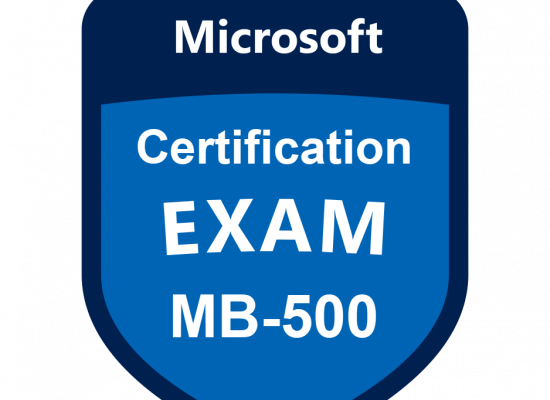AX 2012 R3 Financials Certification Exam MB6-702
Note: This exam is retired.
For current exams, please read our Microsoft Dynamics 365FO Certifications and Exams Overview (axcademy.com)
AX 2012 R3 Financials Certification Exam MB6-702
This preparation guide includes information and tools to assist you in preparation for the AX 2012 R3 Financials Certification Exam MB6-702.
Who should take this exam?
This exam is intended for individuals on the implementation team who are responsible for administrating or using the Fixed Assets and Financial Management modules in Microsoft Dynamics AX 2012 R3. This audience typically includes individuals who are tasked with assessing a customer’s business needs and advising them on the use, configuration, and customization of the application.
Skills Measured
This exam measures your ability to accomplish the technical tasks listed below. The percentages indicate the relative weight of each major topic area on the exam. The higher the percentage, the more questions you are likely to see on that content area on the exam.
Please note that the questions may test on, but will not be limited to, the topics described in the bulleted text.
Configure Microsoft Dynamics AX 2012 R3 (25–30%)
Set up the General Ledger, chart of accounts, and journals
- create a chart of accounts;
- create and categorize main accounts;
- identify main account types;
- create financial dimensions and dimension sets;
- configure account structures;
- create advanced rule structures;
- create organizational units and hierarchies;
- create fiscal calendars, years, and periods;
- create date intervals;
- create reason codes;
- define journal names;
- define allocation rules and allocation basis;
- create system accounts;
- create journal texts;
- set up intercompany accounting;
- define General Ledger parameters
Define cash and bank management and procedures
- create bank transaction types and groups;
- define bank parameters;
- create payment purpose codes, bank groups, and bank accounts;
- define check layouts
Set up Accounts Payable and Accounts Receivable
Create payment schedules and terms, create a payment day, define cash discounts and payment fees, create payment methods, create vendor accounts, create vendor groups, define vendor posting profiles, assign a vendor posting profile, form setup and print management, define matching policies and tolerances, create charges and charge groups, define aging periods
Set up currencies and sales tax
Set up currencies, currency types, and exchange rates; create ledger posting groups; create sales tax authorities; create sales tax settlement periods; create sales tax codes; create sales tax groups; set up item sales tax groups; set up a sales tax jurisdiction
Manage Microsoft Dynamics AX 2012 R3 (25–30%)
Manage General Ledger daily and periodic procedures
Create a General Ledger journal, post multiple journals, approve journals, create a voucher template, create a periodic journal, reverse a General Ledger transaction, manage journal transaction inquiries and reports, create journal controls, revalue foreign currency, process financial consolidation, post a sales tax payment
Manage Accounts Payable daily and periodic procedures
Create vendor invoices, create invoice journals, revalue foreign currency, generate vendor payments, manage vendor postdated checks
Manage Accounts Receivable daily and periodic procedures
Create customer invoices, create free text invoices, revalue foreign currency, apply customer payments, manage customer collections
Manage commitment accounting and cash flow
Configure dependent ledger accounts, set up cash flow forecasting, define a cash flow forecast budget model, create and calculate cash flow transactions
Manage advanced payments
Set up bridge accounts, manage electronic vendor and customer payments, manage centralized payments and prepayments (deposits), administer a bill of exchange, manage direct debit mandates
Maintain bank accounts
Checks and deposit slips, void and refund checks, manage bank remittance and payment reversals, reconcile a bank account
Define and manage budgets (15–20%)
Plan budgets
Identify budget components, identify budgeting methodologies, create organizational hierarchies, define budget stages, define budget allocation terms, configure budget plans, configure budget allocation schedules, configure support for budget planning templates
Control budgets
Plan for budget controls; identify budget control components; set up, create, and revise budgets; define the budget funds available calculation; define budget cycles; create budget control rules and budget groups; manage budget reporting; manage integrated budgeting; create budget transfers
Create basic budgets
Define budget dimensions, create budget models and codes, create budget register entries, define and create encumbrances, manage purchase order encumbrances, process year-end purchase orders
Configure and manage Fixed Assets (20–25%)
Configure the Fixed Assets module
Set up the Fixed Assets module, create value models, create Fixed Asset groups, set up Fixed Asset parameters, manage reason codes in the Fixed Assets module, manage depreciation methods and conventions, manage depreciation books, manage provision types and bonus depreciation, update depreciation conventions for a depreciation book, set up depreciation profiles
Set up assets
Identify Fixed Assets module components; manage Fixed Asset forms; set up assets in the Fixed Assets module; lend assets; assign bar codes to assets, budget assets; integrate other modules with Fixed Assets
Manage asset transactions
Identify typical Fixed Asset transaction types; record acquisitions and acquisition proposals; create and acquire Fixed Assets from purchase orders; record depreciation, value adjustments, and disposals; manage transaction reversals; manage replacement costs and update insured values; copy Fixed Assets and change Fixed Asset groups; manage Fixed Asset additions


Comments are closed, but trackbacks and pingbacks are open.